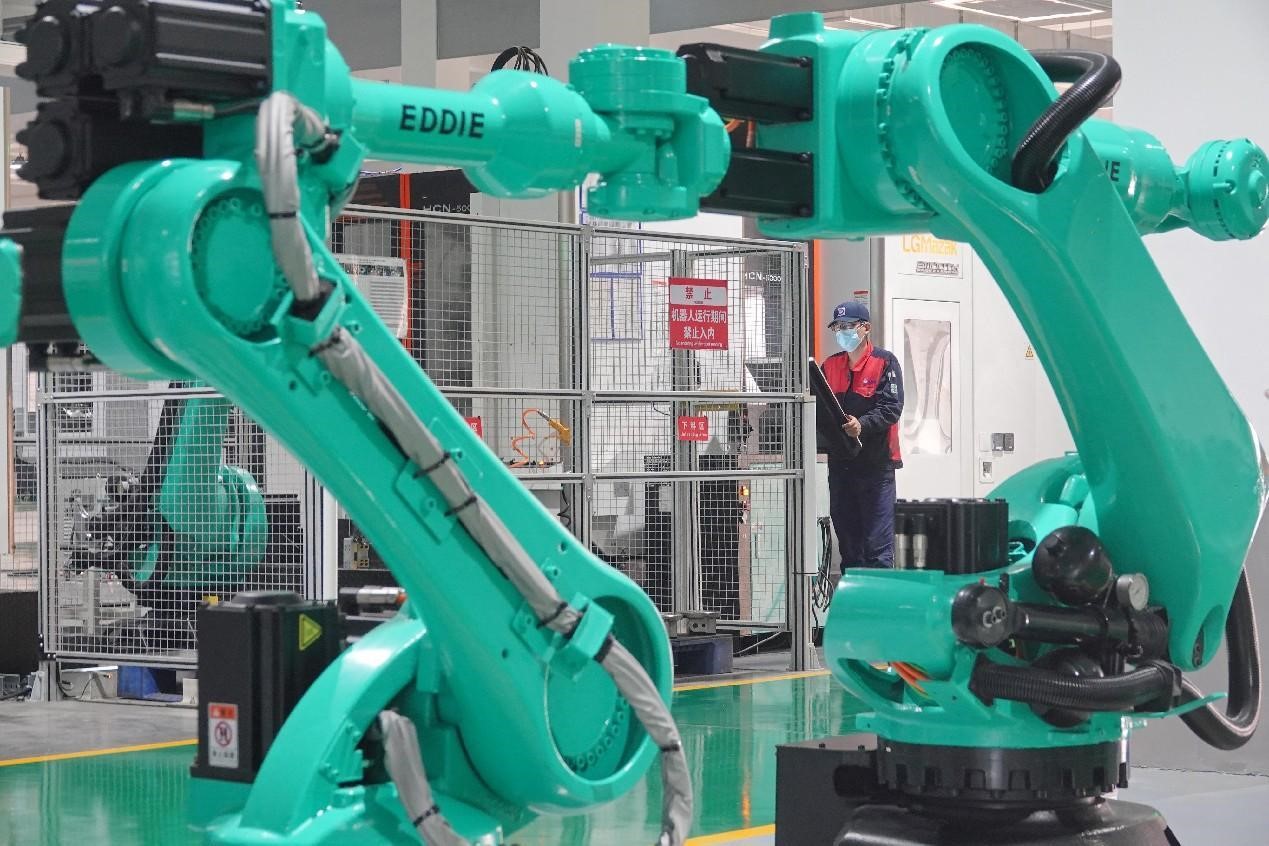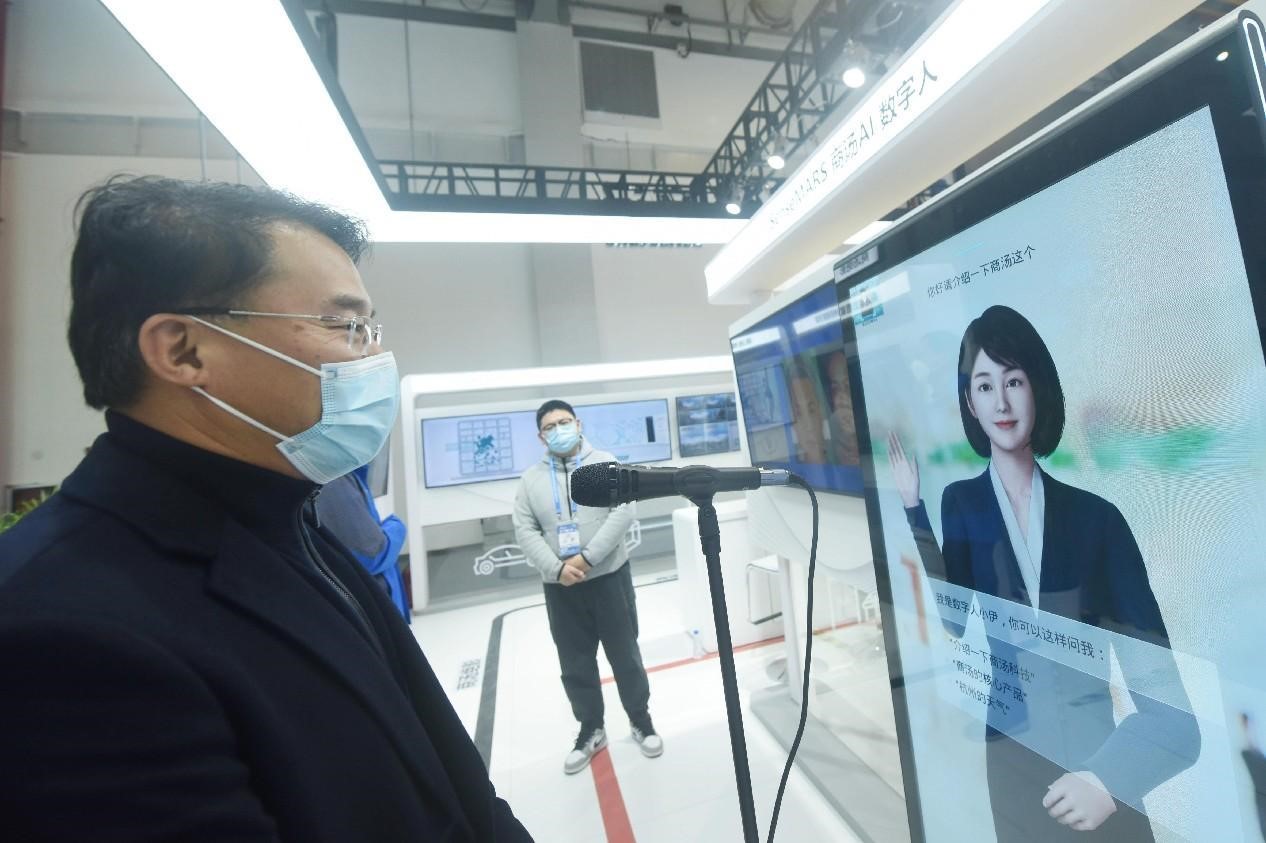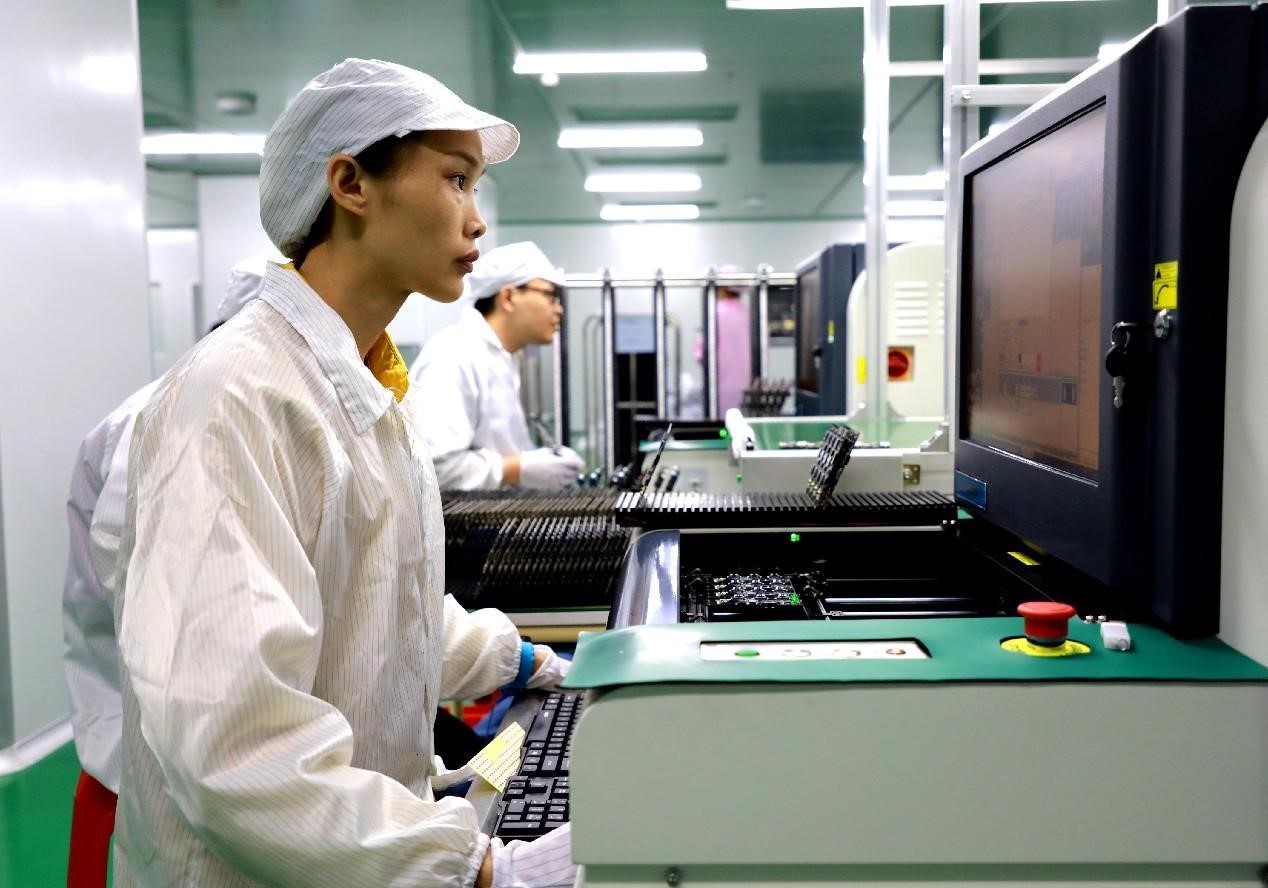China strives to make digital economy stronger, better, larger
In a mine 500 meters underground owned by Jinneng Holding Coal Industry Group in Datong, north China's Shanxi province, the cutting head of a road header rotated at full speed, and blocks of coal dropped on a convey belt and were then loaded into containers after being washed and screened.
Such downhole operation was remotely completed by operators on a computer.
The traditional mining industry, employing 5G, industrial internet and artificial intelligence technologies, has significantly improved its quality and efficiency, and further lifted production safety.
The digitalization of the mining industry is an epitome of how digital economy and real economy are closely integrated and have achieved sound development together in China.

A worker controls robotic arms in a workshop of a precision machinery company in Yantai, east China's Shandong province, Nov. 23, 2022. (People's Daily Online/Tang Ke)
Over the past decade, China has constantly consolidated the foundation for the integration of digital economy and real economy. The number of industrial equipment connected to key platforms exceeds 79 million, and they serve over 1.6 million industrial enterprises. The country's smart manufacturing equipment sector boasts a value of close to 3 trillion yuan (about $430 billion) and meets more than 50 percent of the market demand.
Digital economy concerns the overall development of the country. Over the recent years, China has worked to make digital economy stronger, better, and larger. According to an official with the Ministry of Industry and Information Technology (MIIT), the Chinese digital economy has ranked second in the world for consecutive years, becoming a key driver of the country's economic and social development.
China's capacity in building new digital infrastructure has significantly improved. The country is home to the world's largest optical fiber and mobile broadband networks, and its fixed broadband has been upgraded from 100 megabits per second to 1,000 megabits per second.
China has turned from a country that once could merely keep pace with the world in terms of 4G communication technology to one that is now leading the pack in 5G.
It has built 2.22 million 5G base stations and covered all administrative villages with broadband services, which helps advance the development of new applications, business forms and models in the internet sector.

A visitor talks with an artificial intelligence-enabled virtual figure at the first Global Digital Trade Expo held in Hangzhou, east China's Zhejiang province, Dec. 12, 2022. (People's Daily Online/Long Wei)
China has pushed for the in-depth integration of digital economy and real economy. As of September 2022, the penetration rate of digital R&D and design tools in the country reached 76 percent, and the digital control rate of key processes in industrial enterprises reached 57.2 percent. New scenarios, business forms and models of smart manufacturing kept emerging, which significantly stimulated economic development.
Key digital industries kept expanding. New technologies, business forms and platforms, such as big data, cloud computing, block chain and artificial intelligence sprang up, and the development of "contactless economy" represented by online shopping, online education and telemedicine accelerated, injecting strong impetus into the overall economic development.
According to statistics, the revenue of the electronic information manufacturing industry had hit 12.45 trillion yuan as of October 2022, and that of software businesses 8.42 trillion yuan.
On the whole, China's manufacturing sector is still bothered by overcapacity of low-end products and undersupply of high-end products. It is in urgent need of structural upgrading. The accelerated digital economy has charted the course for improving the quality of the supply system in the manufacturing sector.
Through new technologies, management methods and models, digital economy is conducive to the innovation of application scenarios and business models, and will promote high-quality development of the manufacturing sector.

Workers produce 5G communication modules and terminals in a digital workshop of a tech firm in Quannan county, Ganzhou, east China's Jiangxi province, May 31, 2022. (People's Daily Online/Yin Qiqi)
In a smart factory of Lenovo in Shenzhen, south China's Guangdong province, which boasts an automation rate of 60 percent, a laptop rolls off the production line every 14 seconds. The production line employs 268 robotic arms and automated guided vehicles, and is able to produce 1.2 million laptops on an annual basis.
Ramaxel, a supplier of memory products 20 kilometers away from the Lenovo plant, is also stepping up efforts in digital transformation. The company's on-time delivery rate and production efficiency both increased 30 percent. Its revenue in 2021 surged 140 percent year on year, and still maintained rapid growth in the first three quarters of 2022.
The rapid and continuous development of digital economy in China over the recent years has nurtured a batch of digital industries and clusters that are internationally competitive, such as the intelligent voice recognition enterprises in Hefei, east China's Anhui province, the digital security industry in Hangzhou, east China's Zhejiang province and the prospering internet of things firms in Wuxi, east China's Jiangsu province.
"Accelerating the development of digital economy, promoting the in-depth integration of digital economy and real economy and expanding digital industrial clusters are of important significance," said an official with the MIIT. The official added that China will build digital industrial clusters in different sectors with international competitiveness in batches.
Photos
Related Stories
Copyright © 2022 People's Daily Online. All Rights Reserved.









